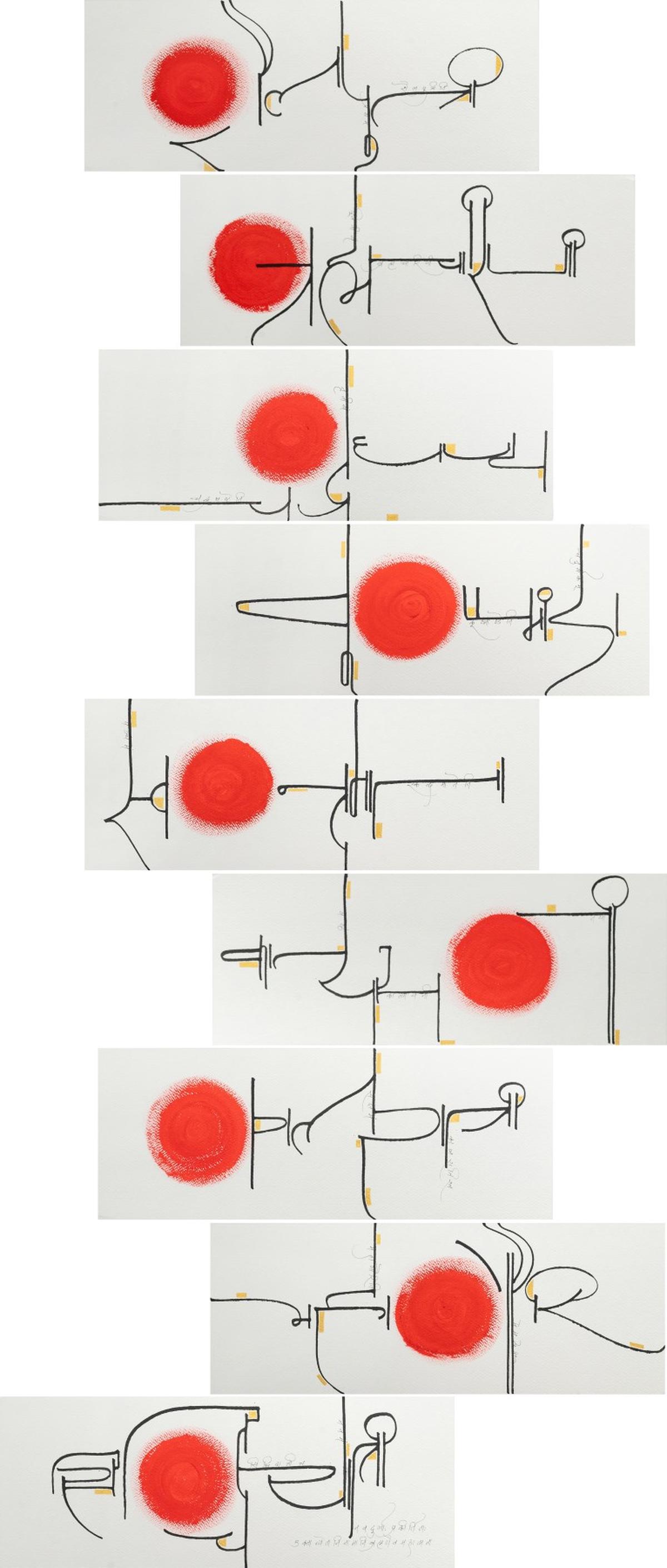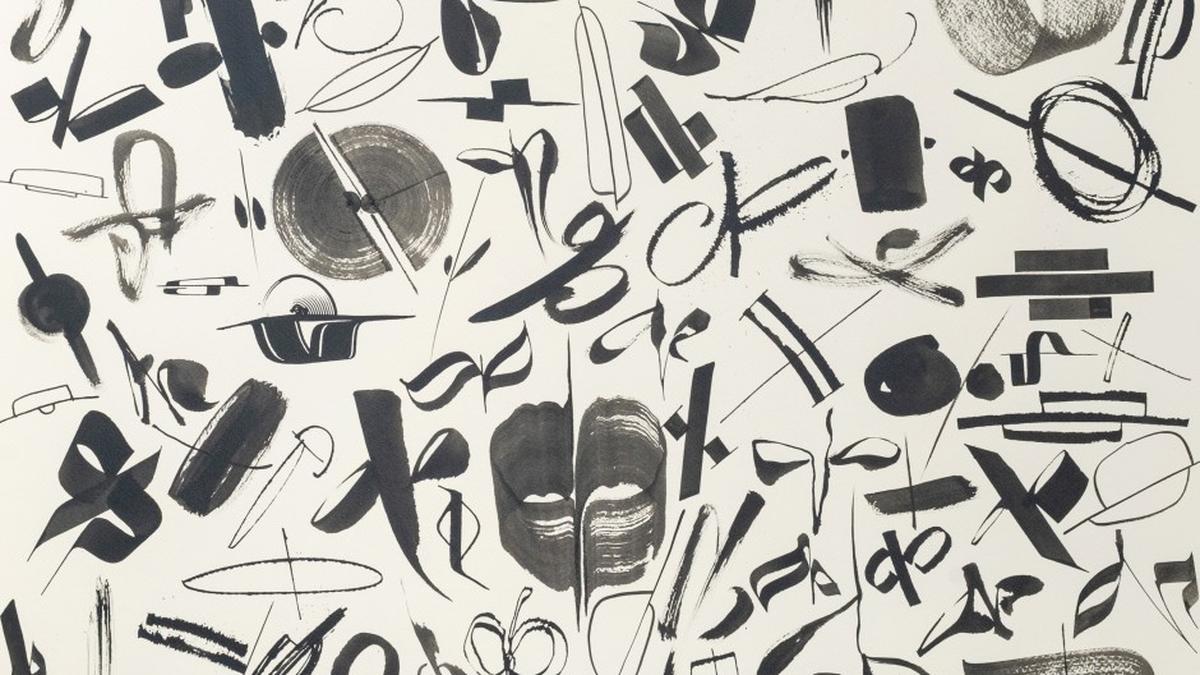
Aksharscape
| Photo Credit: SPECIAL ARRANGEMENT
In his solo exhibition Aksharscape, artist Nikheel Aphale reflects on his personal experiences through calligraphy as a form of expression. The unusual forms on his canvases are wrapped in nostalgia and encompasses all that he strongly feels about.
“Usually calligraphy is considered ancient. But in my art, I have used the Devanagari script in a contemporary form; it is the soul of this exhibition.”
Lisa Jain, the co-founder of Artisera, which is presenting the exhibition at Bikaner house, says, “Nikheel’s work showcases thepotential and strength of letters. They don’t need to be written in a legible form, they can be abstract or stylised and yet come together to create a beautiful piece of art.”
Nikheel’s passion for calligraphy and art took shape when he started off as a professional artist in Delhi. “I formally learned calligraphy as a part of my Under Graduate degree in Applied Arts. But it was in later years, I began utilising my free evenings to practice calligraphy.“
“The most fascinating part of calligraphy is that no illustrations or photographs are used; only the letters create visuals,” says Nikheel. He adds that he does not restrict himself to one particular tool while making his drawings. “Along with the traditional tip pens used for kalam calligraphy, I use quite a few unconventional tools including scotch brite, toothbrush, shaving brush, foam, sponges, to create different textures.”
On the use of colour in his work, Nikheel says he uses them to complement his original pieces because calligraphy is not bound by any hard and fast rule against usage of colour.
Many forms, one essence

Nikhil Aphale’s calligraphy painting Navadurga on display at his solo exhibition Aksharscape in Bikaner House
| Photo Credit:
SPECIAL ARRANGEMENT
One particular art piece at the exhibition grabs eyeballs. It consists of the Devanagari letter ‘ka’ which is presented in a multitude of avatars. Each is distinct, yet rooted in shared identity. It is in this visual rhythm of sameness and difference that Nikheel’s artworks finds a voice.
He draws a parallel between the evolving shapes of letters and the human experiences irrespective of the differences in language, gender, class, colour, belief, and topography. “There’s something essential that binds us,” says Nikheel whose painting ‘Many forms one soul” consists of letters on the canvas in all shapes and sizes just like people. “But the letter Ka remains true to its form despite change just likehumanity persists beneath the surface.”
Another artwork, Navadurga is a contemporary interpretation of the nine manifestations of Goddess Durga – Shailaputri, Brahmacharini, Chandraghanta, Kushmanda, Skandamata, Katyayini, Kalaratri, Mahagauri, and Siddhidhatri. It evokes a quietpower, the kind that settles in slowly but leaves a lasting impression.
At the center of each composition lies a bold, red kumkum circle which intrigues the viewer to ponder its placement. It is a celebration of feminine divinity in motion, bridging traditional reverence with modern minimalism, Nikheel says.
Aksharscape unfolds as a profound exploration of a script. It works as an instrument for meaning, memory, and presence. In an interplay of sacred symbols and everyday scripts, the exhibition finds its rhythm and holds reverence for tradition and a deep curiosity for form. It is a body of work that reflects the stillness and complexity of what it means to hold many identities in one unified essence.
At Bikaner House, Main Gallery, Pandara Road; Till June 1; 10am to 6pm
Published – May 29, 2025 10:56 am IST



